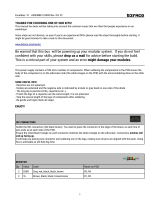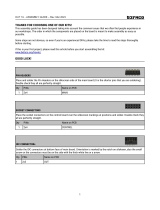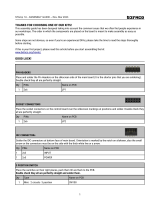
Case V1 - ASSEMBLY GUIDE Rev. Jun 23
THANKS FOR CHOOSING ONE OF OUR KITS!
This manual has been written taking into account the common issues that we often find people experience in our
workshops.
Some steps are not obvious, so even if you're an experienced DIYer please read the steps thoroughly before starting. It
might be good moment to take a look to this document:
www.befaco.org/howto/
Be warned that this bus will be powering up your modular system. If you do not feel
confident with your skills, please drop us a mail for advice before starting the build.
This is a critical part of your system and an error might damage your modules.
This power supply contains a PCB and a number of components. When soldering the components to the PCB ensure the
body of the component is on the silkscreen side (the white images on the PCB) with the actual soldering done on the other
side.
SOME USEFUL INFO:
- Resistors are not polarized.
- The long leg is positive (LEDs, capacitors etc…).
- Snip the excess length of the legs of components after soldering.
- Be gentle and triple check all steps!
ENJOY!
LET’S START WITH THE TROLLEY BUS PCB
Solder the IDC connectors (the black boxes). You need to place the connector in the edge of the board, so each line of
pins ends up at each side of the PCB.
Ensure the small black triangle on each connector matches the white triangle on the silkscreen. Connectors notches will
end up facing up.
It will help you placing one connector and soldering one of the legs, making sure all pins are aligned with the pads. Using
flux is advisable as will help big time.
It’s strongly recommended to measure the resistors with a multimeter. Color code might be hard to read with blue/green
background.
Red, red, black, brown, brown.
Brown, black, black, brown,brown






















